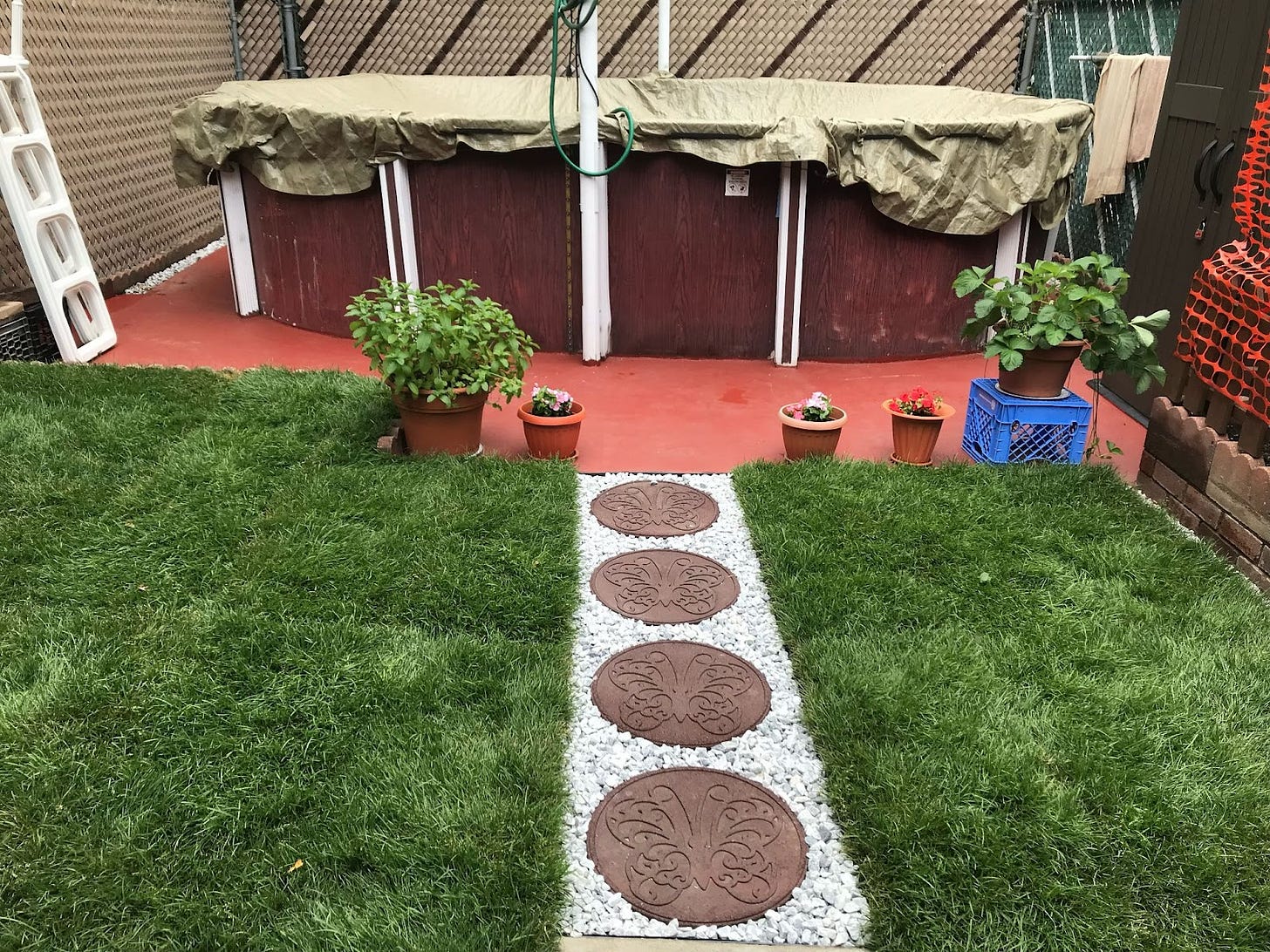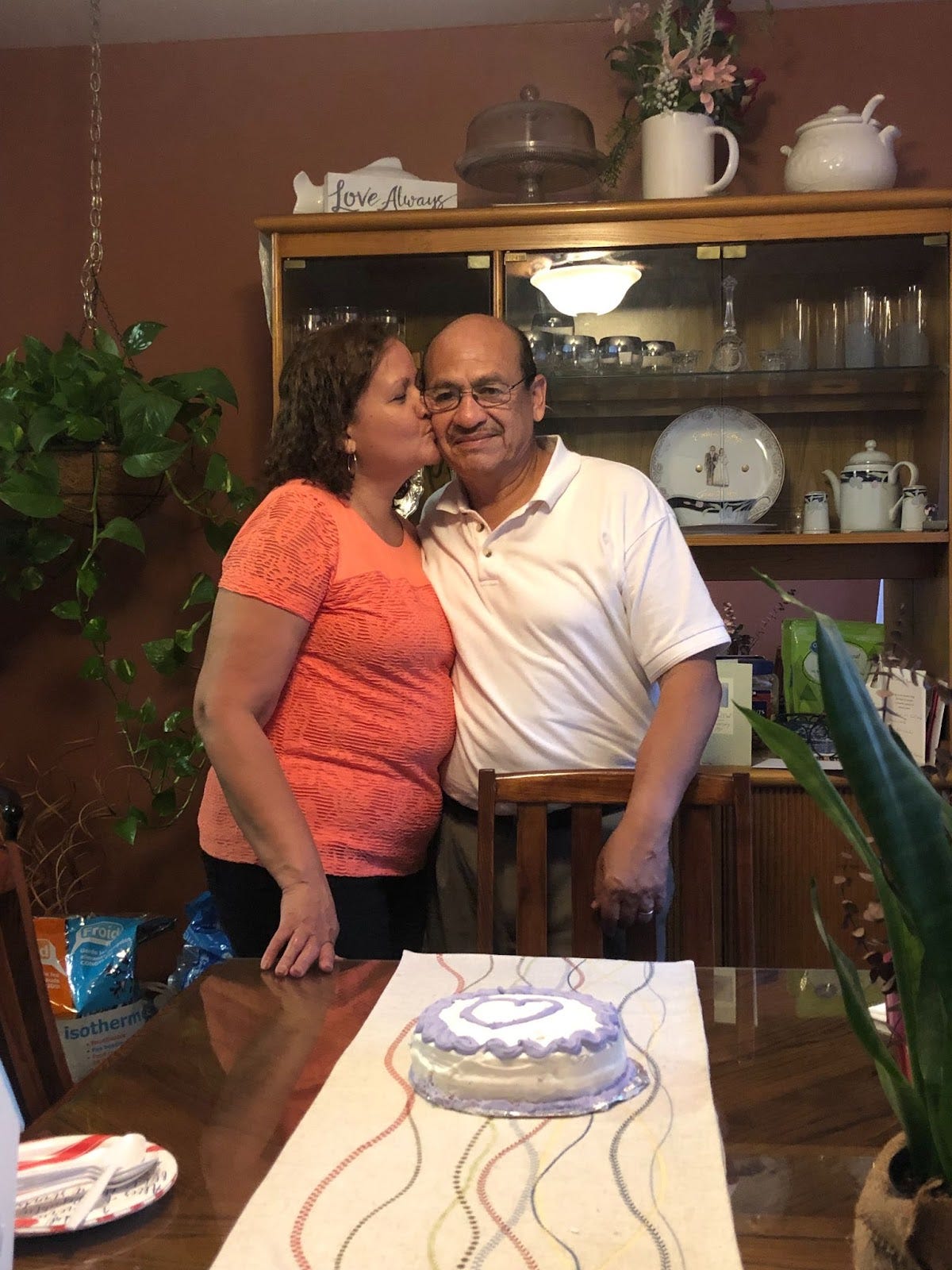39 Years Later
Nestled in the middle of a row of houses near Arthur Avenue in the Bronx sits a red-bricked, one-family house. It appears almost identical to all the other houses, only its newly repainted off-white metal fence, scattered bushes and plants, and years-old Christmas wreath lights differentiate it from its neighbors.
The inside of the house is overflowing with pictures dating back to the 1970s, niche family mementos, and a mix of modern and sorely outdated furniture. The smell of rice and beans wafts throughout the house at all times, and every step is heard by the creaking of the wooden floorboards. The kitchen, white and spotless, still contains nicks and scratches in only places those who grew up there can find. This is the house where I grew up, where my mom and her sisters grew up, and where my grandparents call home.
My grandparents, Jorge and Evelyn Ibañez have lived in this house for 39 years after searching for a home big enough to accommodate their growing family. Cramped in a one-bedroom apartment as a then family of five, they hoped to find a place big enough and yet affordable. It was 1983, and much of New York City, specifically the South Bronx, was going through a housing crisis, one so bad that it drew the attention of big political figures of that time.
“Things were so awful, President Carter came and said he was going to rebuild the Bronx,” my grandma recalled.
Just a few years prior, in 1977, President Jimmy Carter paid a visit to the South Bronx and witnessed the deterioration of the neighborhood which was lined with broken-down stores and vacant apartments. This visit resulted in a program led by former Mayor Ed Koch that built 2,200 moderately priced, federally subsidized, one and two-family houses in troubled New York City neighborhoods.
“I was walking down East 187 Street one day, and I saw a sign on the window of a realtor's office saying that they were selling newly built houses, and all you needed was a down payment of $50,” my grandma explained. “So I dragged your grandfather there the next day and we filled out an application, gave the $50, and then we waited.”
However, the process took much longer than expected and after waiting for three years, construction finally began on their new house. When they were finally able to move in, the house still wasn't fully constructed; the basement and front and back yards remained unfinished. But at that point, my grandparents were just excited to have a place they could call their own.
“I remember when we first got into the house before it was painted and before we moved in, we sat down on the staircase almost crying and we looked at each other and said, ‘This is our home,’” my grandpa shared.
They weren't the only ones who benefited from these affordable, federally subsidized houses. Their entire neighborhood was filled with working-class families who were able to afford these homes. Their first neighbors, though none remain in the neighborhood, included a correctional officer, a nurse, a mailman, a police officer, and a carpenter.
“When we first moved in, all of us, all the neighbors were first-time homeowners and we had a close connection,” my grandma recalled. “And so we used to celebrate a lot of things together, we would have barbeques and pool parties once we got the pool in the backyard.”
Having a pool in their backyard was something that not only my grandparents benefitted from, but so did the rest of the family. We had cookouts, pool parties, and played board games all through the summer, year after year. It was the pool where my grandpa taught my mom and her sisters to swim, and years later my cousin and I.
But the real crowd-pleaser has always been the garden which they began immediately after moving in and still maintain to this day.
“Actually, I was pregnant with our youngest, Lisalee, right after we moved in and planted the garden,” my grandma told me. “That first year, we grew tomatoes, lettuce, radishes, peppers… Oh! And corn but that didn't turn out too good 'cause the stalk was huge but the corn itself was tiny.”
It's been 30 years since and during hot summer nights you can find my cousin and I fighting off mosquitoes and stealing tomatoes from their garden. In a way, not much has changed. Their house is still the place where our family continuously returns to. For as long as I can remember, every birthday, holiday, and celebration of any kind has been celebrated at their house. Which is why my family and I were sad to hear that my grandparents were thinking about moving.
“We don't want to sell it, we're going to miss everything about it. But we’re not getting any younger, and it's hard to take care of this place by ourselves and with all the snow,” my grandpa admitted. “It’s our home, it's everybody’s home, we love it.”
“It's about the neighborhood too though,” my grandma said. “I don't have to go to another neighborhood to find queso de papa or queso blanco, you know? I know the places that sell the Puerto Rican products that I like but if we move somewhere else, it’ll be harder.”
I know that for my grandparents, it's not just the house itself or the neighborhood, but also the people. Although many of their friends who lived in the area have moved, they still have ties to those living near them and of course, the rest of our family most of whom live less than an hour away. The real question that I think they are struggling with, but that they keep to themselves, is what happens when we lose the one place we call home?
Unlike many immigrant families, my grandparents were not concerned about achieving the American dream. Owning their house for almost 40 years is something they are certainly proud of, but being able to “share it with family and friends” has always been more important to them.
“Some people only work to have a nice house,” my grandpa told me. “We don't work for a house. We worked for a home.”
Truthfully, I have no clue what the future holds for my grandparents' house. But to their point, this house has always been a cornerstone in my life. I’ve celebrated more birthdays there than I can remember. It’s where I learned how to walk, where I learned how to swim, and where I learned how to cook. It is proof of the personal achievements my grandparents have had and the family they created.
“We have always wanted our home to be the place you all know you can come back to, at any time,” my grandma told me.





